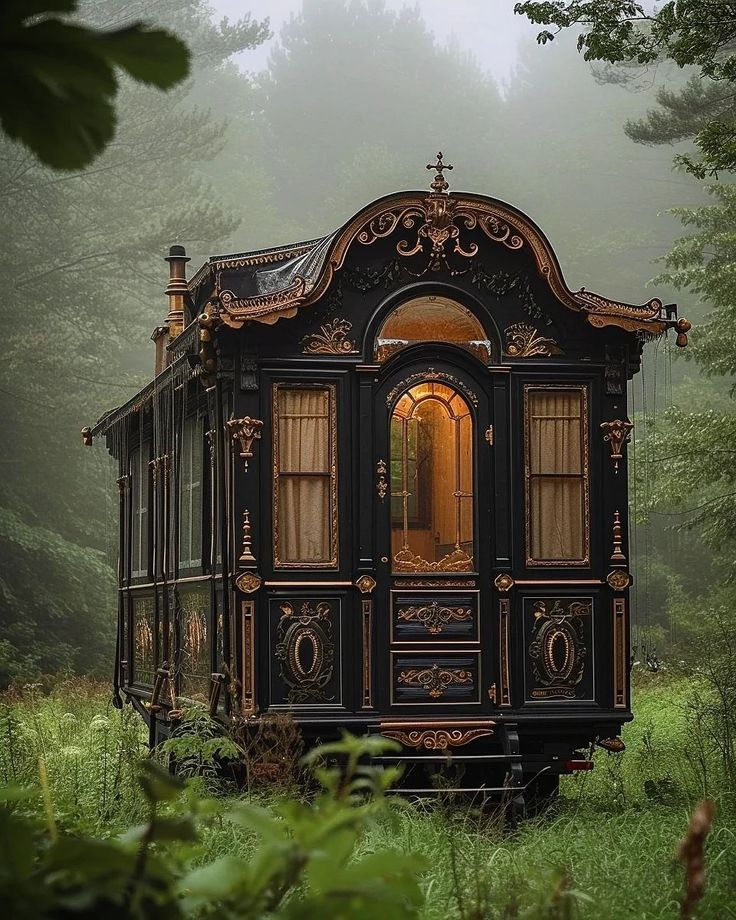19th-century Fairytale Caravan

The caravan in the image captures the essence of the 19th-century Romani vardo—a traditional wagon used by the Romani people, also known as Gypsies, as they traveled across Europe. These wagons were not merely a means of transportation; they were homes, lovingly decorated and often passed down through generations. The black wood paneling, ornate carvings, and delicate curtains peeking through the windows are reminiscent of the vardo’s intricate designs, which were meant to reflect the owner’s personality and craftsmanship.
What sets this caravan apart from its historical counterparts is the seamless blend of nature and architecture. Ivy and flowering plants have taken over the structure, winding through the ornate carvings and adding a layer of life to the wooden frame. This symbiotic relationship between the natural and the man-made creates a living, breathing sanctuary. It’s as if the caravan itself has become a part of the forest, a secret hideaway where time stands still.

The soft glow from the inside, visible through the lace curtains, suggests warmth and comfort. It invites the viewer to imagine the cozy interior—perhaps filled with plush cushions, a tiny wood-burning stove, and shelves lined with books and trinkets collected from travels. The warm light contrasts with the misty, overgrown surroundings, creating a sense of refuge from the outside world.
For those who dream of a nomadic life, this caravan is a manifestation of that dream. It embodies the idea that one can live fully and beautifully in a small space, carrying their home wherever the road might lead. It’s a reminder that life is not about how much space you have, but how you fill it with love, creativity, and a sense of adventure.